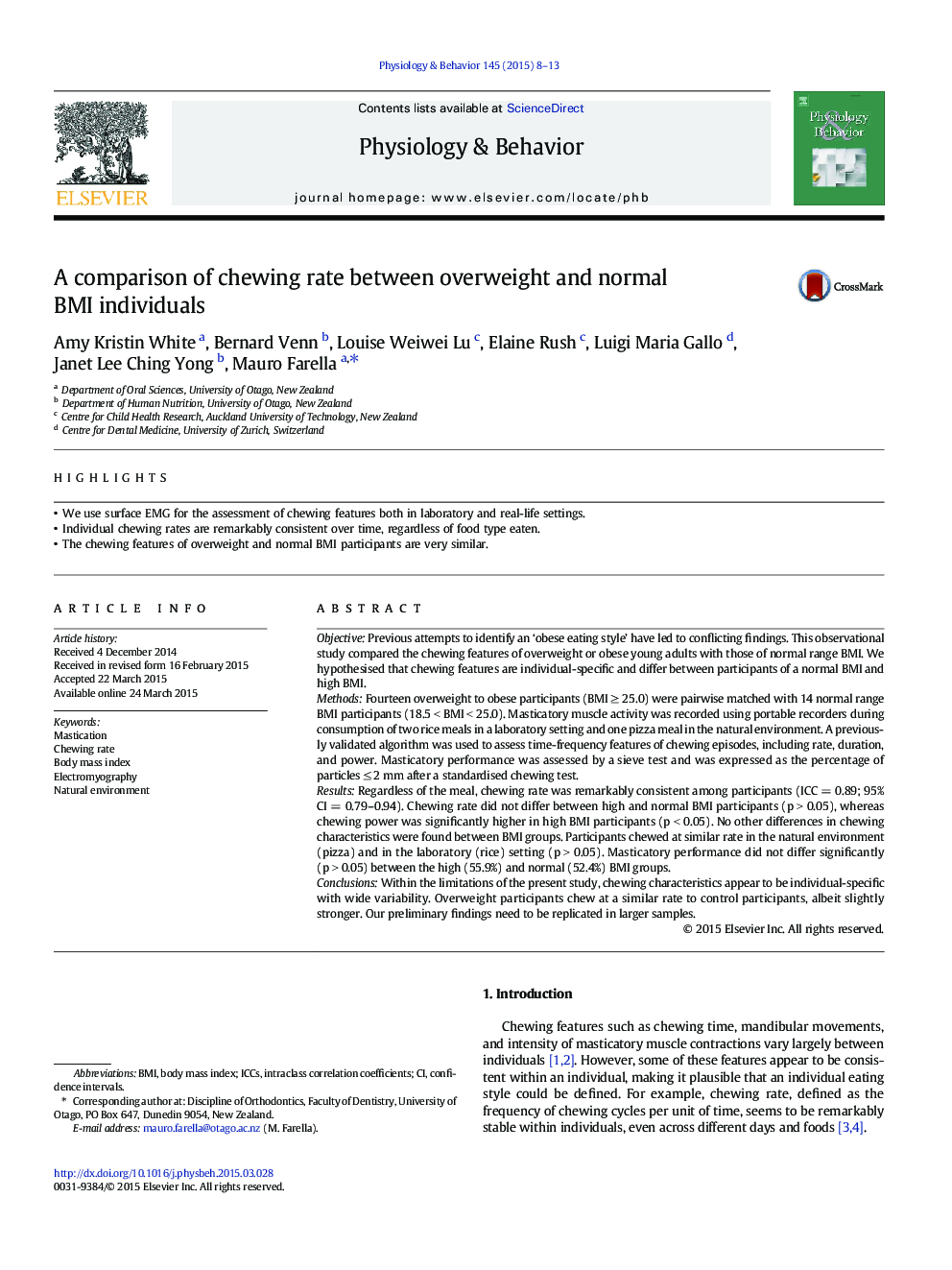| کد مقاله | کد نشریه | سال انتشار | مقاله انگلیسی | نسخه تمام متن |
|---|---|---|---|---|
| 2844111 | 1571172 | 2015 | 6 صفحه PDF | دانلود رایگان |

• We use surface EMG for the assessment of chewing features both in laboratory and real-life settings.
• Individual chewing rates are remarkably consistent over time, regardless of food type eaten.
• The chewing features of overweight and normal BMI participants are very similar.
ObjectivePrevious attempts to identify an ‘obese eating style’ have led to conflicting findings. This observational study compared the chewing features of overweight or obese young adults with those of normal range BMI. We hypothesised that chewing features are individual-specific and differ between participants of a normal BMI and high BMI.MethodsFourteen overweight to obese participants (BMI ≥ 25.0) were pairwise matched with 14 normal range BMI participants (18.5 < BMI < 25.0). Masticatory muscle activity was recorded using portable recorders during consumption of two rice meals in a laboratory setting and one pizza meal in the natural environment. A previously validated algorithm was used to assess time-frequency features of chewing episodes, including rate, duration, and power. Masticatory performance was assessed by a sieve test and was expressed as the percentage of particles ≤ 2 mm after a standardised chewing test.ResultsRegardless of the meal, chewing rate was remarkably consistent among participants (ICC = 0.89; 95% CI = 0.79–0.94). Chewing rate did not differ between high and normal BMI participants (p > 0.05), whereas chewing power was significantly higher in high BMI participants (p < 0.05). No other differences in chewing characteristics were found between BMI groups. Participants chewed at similar rate in the natural environment (pizza) and in the laboratory (rice) setting (p > 0.05). Masticatory performance did not differ significantly (p > 0.05) between the high (55.9%) and normal (52.4%) BMI groups.ConclusionsWithin the limitations of the present study, chewing characteristics appear to be individual-specific with wide variability. Overweight participants chew at a similar rate to control participants, albeit slightly stronger. Our preliminary findings need to be replicated in larger samples.
Journal: Physiology & Behavior - Volume 145, 1 June 2015, Pages 8–13